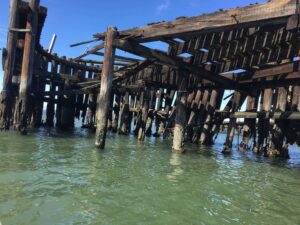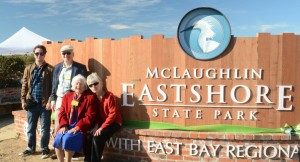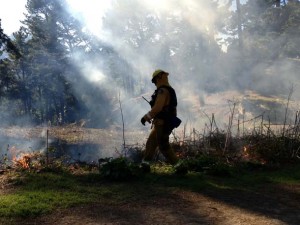Few of us would pick Tilden Regional Park in the East Bay hills as our favorite wildland park. It’s got a merry-go-round, pony rides, the Little Farm, picnic areas, and a lot of exotic trees and brush. Oh, and lots of people. When I want to really “get out into nature,” I look to wilder places such as Point Reyes or Mount Diablo. And yet, I’ve probably spent more time in Tilden than in any other park in the Bay Area.
That’s partly explained by the fact that I live down the hill in Berkeley. When I moved here from San Francisco 20 years ago, Tilden became my big backyard. Jogging along Wildcat Creek allowed me to work up a sweat and keep in shape, with raptor and rabbit sightings to distract me from tired legs and lungs. I spent a lot of time with my young son at the Little Farm, the playgrounds, and picnic areas, while the trails just beyond these built-up areas lured us on short walks of discovery. Lake Anza is a great place for a swim on those too-infrequent warm summer evenings. The Botanic Garden is a world-class treasure. And one of my favorite Christmas hikes is up Seaview Trail to the maze; on a clear winter day the white crown of the Sierra shines in the distance, while the whole Bay Area spreads out below.
My favorite Tilden memory of all is from a winter morning after a series of rainstorms. My son and I put on our rubber boots and headed to the Jewel Lake trail. It’s a boardwalk that weaves through the thick forest along Wildcat Creek. Even in “normal” weather, it’s pretty magical, meandering through a tunnel of green with the creek flowing gently under the walkway while birds move through the canopy above. But that day, the water was rushing over the walkway, giving us the shared thrill of seeing–and splashing through–a familiar place transformed by water.
For all these gifts, I thank the farsighted people who created the East Bay Regional Park District (EBRPD) 75 years ago. Tilden was one of the district’s three original parks. There was no template for a regional park system at the time: EBRPD was the first in the nation, and it remains the largest. But more important, recall that 1934 was the middle of the Great Depression. What a great idea: When times are tough and most people can’t afford their own private retreats, why not pool collective resources to secure spaces for the public to enjoy recreation and seek solace?
How sad, then, that in the midst of the worst economic crisis since the Depression, we now face the possible closure of at least 100 state parks. (Three parks mentioned in this issue–Henry Coe, Bale Grist Mill, and Benicia–are reportedly among those 100.) What a stark contrast between the expansive and civic-minded vision of EBRPD’s founders and the constricted and shortsighted measures taken today by the governor and a minority of legislators. We don’t have to go down this latter road; the East Bay Regional Parks are a great example of what we can do, even (or especially) during an economic downturn. Let’s celebrate this anniversary by visiting our favorite parks and keeping the pressure on state officials and legislators to let us keep the parks we’ve paid and cared for over so many years.

.jpg)



